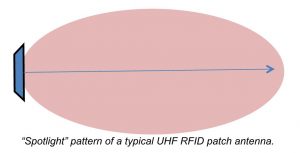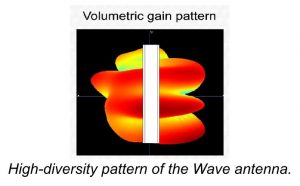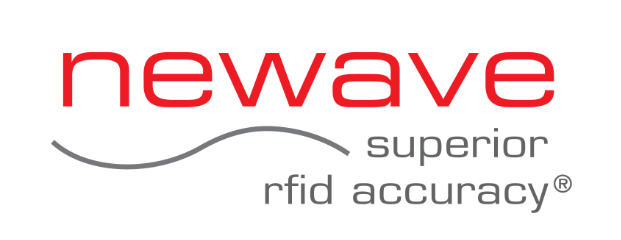A NEW PARADIGM FOR ITEM-LEVEL RFID ANTENNAS
Author: RJ Burkholder, Research Professor of Electromagnetics and RF at The Ohio State University
For years RFID system designers have trusted in the old reliable patch antenna to solve all their reader antenna needs. But how reliable is it? If you were to picture the beam, it would look something like a single beam, conical spotlight illumination pattern:

This might be good if you’re looking for tags that are far away and in a specific and known location, but not good for tags that may be close to the antenna but outside the beam. Also, in most portal and item-level applications you don’t want to see tags that are far away, extraneous tags, because that makes it difficult to localize the tags of interest.
What’s the solution? Well, we can crank down the power on the RFID reader, but that doesn’t solve the spotlight problem because the beam simply collapses in the same pattern. We can use more antennas to try and fill in the gaps in the illumination, but that is a Band-Aid solution at best, one never really knows if all the gaps are covered and it becomes a complex and expensive solution. Another possibility is the so-called “near-field antenna” (an oxymoron to antenna designers), but these have a very limited range, too limited for item-level RFID and they are not practical for covering large volumes.
The NeWave® philosophy is to not use a spotlight to do the job of a fluorescent light. The latter does a much better job of uniformly illuminating a room or in the case of item-level RFID, the targeted tag read zone. By analogy, NeWave’s Wave® antenna is designed specifically for reliable high-diversity high-density coverage of a finite volume around the antenna, perfect for item-level RFID:

It’s what we call a “distributed antenna” because it emanates waves all along its length like a fluorescent lightbulb. It also uniquely creates five interlocking beams traveling in different directions to provide much better polarization diversity than a single beam patch antenna. This design is ideal for item-level applications because tags can be localized to a certain volume around the antenna, and there are no gaps in the coverage. Unlike the patch, due to the Wave’s illumination pattern, tags can be read regardless of their orientation.
The concept of an antenna that creates localized coverage of a given volume is a new paradigm for item-level RFID applications. It enables the establishment of zones within a larger environment such as a warehouse or retail store, making it possible to accurately locate tags quickly and perform inventories at the push of a button, the Holy Grail of item-level RFID technology. Importantly the size of these zones can be adjusted from approximately 2 to 10 feet by a simple power adjustment providing great flexibility.
Next blog: Why the antenna is the most important component of an RFID system.
The opinions expressed on this webpage are the author’s and do not necessarily represent the opinions of The Ohio State University.

